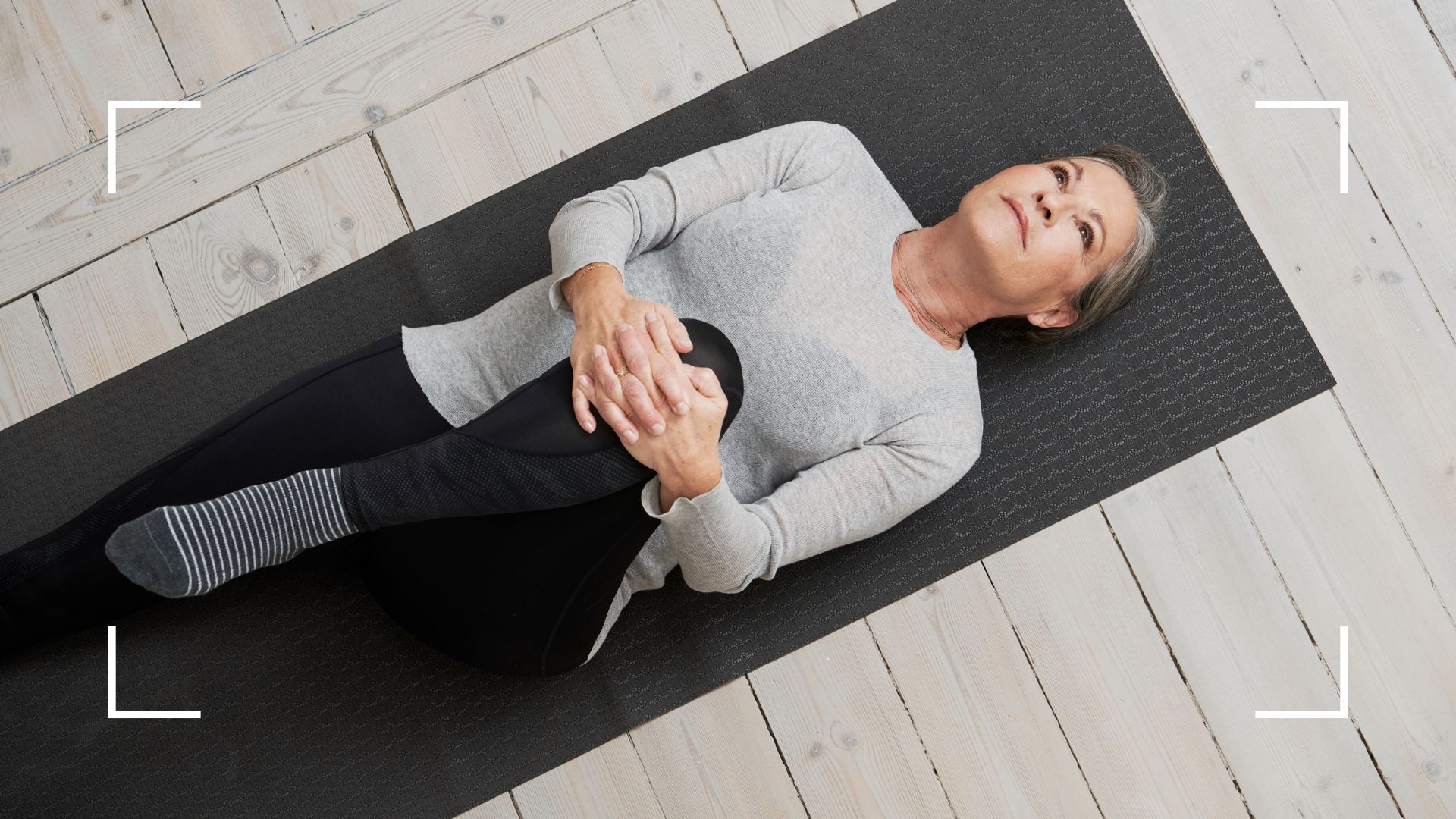What is somatic exercise? Plus, the 9 types to try for relieving stress and improving flexibility
There are so many benefits to learning what is somatic exercise, including stress relief and improvements in balance and flexibility. Here, the experts explain what you need to know


What is somatic exercise? For those looking to relax and unwind, get in touch with their emotions, and find balance both physically and mentally, this form of exercise may be the new best thing.
While many people pick up one of the best yoga mats to do somatic exercise, unlike a regular workout, this isn't about getting your heart rate up. Somatic exercise instead encourages people to perform every movement in a way that teaches them something about how their body is feeling.
If you're familiar with yoga nidra and yin yoga, you'll know the benefits this can bring. Movements like super-slow stretches, thoughtful dance, yoga, Pilates, and body scans are designed to calm your nervous system, reduce pain, and correct your posture. Here, experts in somatic healing and yoga reveal all you need to know about the practice.
What is somatic exercise?
At its core, somatic exercise focuses on how your body is feeling. "It is a form of movement therapy that focuses on the internal experience of movement rather than external appearance or result," says Yulia Kovaleva, a sound, breath, and Reiki practitioner, who is also the founder of Re:Mind.
"These exercises are designed to improve body awareness, release tension, and re-educate the nervous system on how to move efficiently and comfortably."
The aim of this is to allow the so-called "somatic brain" to take over. This is linked to the somatic nervous system, the part of the general system which allows you to move and control the muscles in your body and feeds information to the brain from the senses (smell, sound, taste, and touch). By moving as slowly as possible and actively engaging with the practice, you can help to better cement this mind-body connection.
The name of the practice as we know it today in the West was coined by Dr Thomas Hanna, a philosopher and somatic educator, in the 1970s. However, as much as somatic exercise has become more popular in the last few decades, the fundamentals come from ancient Eastern healing practices like tai chi.
Sign up to our free daily email for the latest royal and entertainment news, interesting opinion, expert advice on styling and beauty trends, and no-nonsense guides to the health and wellness questions you want answered.
There are many types of somatic exercise, including:
- Yoga
- Breathwork
- Stretching
- Dance
- Pandiculation: Intentionally contracting and slowly releasing muscles to restore their natural length
- Pilates
- Posture exercises
- Martial arts
- Body scans: Focusing on how each part of your body feels at a time
However, when it comes to somatic exercise, there's no one-size-fits-all approach. "Any movement that is performed mindfully and intentionally, and can increase your connection and awareness to your body, I would personally say is a somatic movement," says Cat Meffan, renowned yoga, sound and breathwork facilitator and founder of the Soul Sanctuary.
"Some facilitators and guides may argue that there is a set type of exercise that must be done for it to be somatic, but to be embodied in your movement is to be in somatic exercise. For some, this may look like small, slow and gentle movements, but for others, it could be techniques like shaking, tapping, dancing or even an embodied release of rage through movement."

Yulia Kovaleva is the founder of Re:Mind Studio and a sound, breath and Reiki practitioner.
Cat Meffan is a certified yoga instructor, sound and breathwork facilitator, and founder of the Soul Sanctuary.
Benefits of somatic exercise
1. Somatic exercise can help you reduce stress
If you're looking to learn how to lower cortisol levels without traditional coping mechanisms, understanding what is somatic exercise could be what you need.
"The deliberate and slow movements, combined with conscious breathing, activate the parasympathetic nervous system. This promotes relaxation, reduces stress, and helps to foster a sense of calm by addressing and releasing muscular tension," says Christianne Wolff, somatic healing and breathwork specialist.
The sympathetic nervous system controls the flight or fight response. When this is activated, you're likely to feel more stressed and even experience the early signs of burnout if it goes on for long enough. Moving away from this through somatic exercise can help install the 'rest and digest' function of the parasympathetic nervous system.

Christianne Wolff is a multi-award-winning, bestselling author of 7 books in The Body Rescue Plan series. She is a qualified personal trainer, Astanga and Hatha Yoga instructor, somatic healer, Pilates teacher, and nutritionist.
2. Somatic exercise can help alleviate lower back pain
Focussing on the lower back by engaging the small muscle fibres in slow stretches and mindful movement can help to unlock tension in these muscles, reducing the chance of lower back pain in women.
This is a common reason why people learn what is somatic exercise as research shows that this type of movement is very effective for those with consistent aches and pains in the lower back. Multiple studies - by the University of Utah and Policlinico Umberto Hospital I - show that somatic exercise practices can help chronic back pain and so, by association, improve mood and general wellbeing.
3. Improves posture and flexibility
Many types of somatic exercise can help you do a personal posture exam of sorts, to examine your posture, balance, and flexibility, and improve upon it. Pilates for beginners, gentle yoga, and a session on one of the best stretching apps all count as somatic exercise and can help with this.
"By releasing tension and restoring optimal muscle length, these exercises lead to improved posture, increased flexibility, and a reduction in discomfort associated with muscle imbalances," says Wolff, the author of The Healed State and founder of The Body Rescue Plan.

4. Somatic exercise can help release trauma
While there's no replacement for proper mental health assistance, somatic exercises have been shown to help people navigate a traumatic experience (alongside other interventions).
"When a person has a traumatic experience, they may feel numbness in various places in the body. They may experience tingling or pain. Just like blocked pipes in a building, this energy gets stuck," says Aysha Bell, a yoga teacher with a basis in somatic healing.
"When working in a somatic way, the intention is to move this energy and clear stagnant energy out of the body," she says.

Coming from a long line of healers, yogi Aysha Bell’s energy is truly inspirational - and infectious. Her practice is based on somatic therapy - channeling the energy of the universe to help clients connect body and mind and become more present in their lives. Somatic therapy helps to resolve past trauma and emotional blockages and restores the body’s natural flow of energy. Whether you’re attending her yoga sessions, meditation workshops, sound healing or breathwork classes, it’s impossible to walk away feeling anything other than centered, restored and rejuvenated.
Who are somatic exercises good for?
Many people can benefit from learning about somatic exercise and the key movements - but it's particularly beneficial for those grappling with chronic pain, stress, or movement restrictions, says Wolff. "It can equip individuals with tools to manage stress through relaxation techniques and mindful movement."
It can also be useful for those who need an alternative routine to traditional exercise, she notes. Doing yoga every day or yoga mat exercises involving mindful stretching routines won't only help the body recover from intense exercise, but the mind too.
"It helps athletes by enhancing body awareness, flexibility, and coordination, providing benefits for athletic performance and injury prevention," she says.
What's the difference between yoga and somatic exercise?
- Both somatic exercise and yoga emphasise mind-body connection: However, key differences exist, says Wolff. "Somatic exercises emphasise internal bodily sensations and tension release, while yoga encompasses a broader range of postures, breathing exercises, and meditation within a spiritual and philosophical framework."
- Somatic exercises involve deliberate, controlled movements: These are designed for tension release, says Wolff, whereas yoga incorporates dynamic poses and flows.
- Yoga encompasses spiritual and philosophical dimensions: This includes mindfulness, ethics, union of mind, body, and spirit. Somatic exercises focus more on the physiological aspects of movement and awareness.

Grace Walsh is woman&home's Health Channel Editor, working across the areas of fitness, nutrition, sleep, mental health, relationships, and sex. She is also a qualified fitness instructor. In 2025, she will be taking on her third marathon in Brighton, completing her first ultra marathon, and qualifying as a certified personal trainer and nutrition coach.
A digital journalist with over seven years experience as a writer and editor for UK publications, Grace has covered (almost) everything in the world of health and wellbeing with bylines in Cosmopolitan, Red, The i Paper, GoodtoKnow, and more.